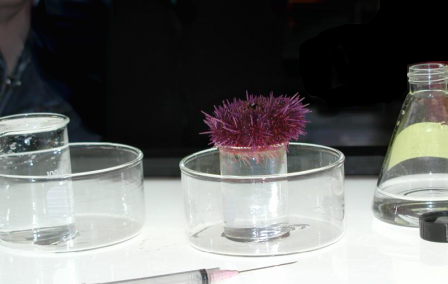Whole Effluent Toxicity Methods
 Whole Effluent Toxicity (WET) refers to the aggregate toxic effect to aquatic organisms from all pollutants contained in a facility's wastewater (effluent). It is one way we implement the Clean Water Act's prohibition of the discharge of toxic pollutants in toxic amounts. WET tests measure wastewater's effects on specific test organisms' ability to survive, grow and reproduce.
Whole Effluent Toxicity (WET) refers to the aggregate toxic effect to aquatic organisms from all pollutants contained in a facility's wastewater (effluent). It is one way we implement the Clean Water Act's prohibition of the discharge of toxic pollutants in toxic amounts. WET tests measure wastewater's effects on specific test organisms' ability to survive, grow and reproduce.Acute Toxicity to Freshwater and Marine Organisms
This manual describes test procedures for effluents and receiving waters and includes guidelines on test species selection and mobile toxicity test laboratory design. The acute toxicity tests generally involve exposure of any of 20 test organisms to each of five effluent concentrations and a control water. The test duration ranges from 24 to 96 hours. The following methods are described in the manual (5th edition, 2002).
| No. | Method Title |
|---|---|
| Freshwater methods: | |
| 2000.0 | Fathead Minnow, Pimephales promela, and Bannerfin shiner, Cyprinella leedsi |
| 2002.0 | Daphnia, Ceriodaphnia dubia |
| 2019.0 | Rainbow trout, Oncorhynchus mykiss, and Brook trout, Salvelinus fontinalis |
| 2021.0 | Daphnia puplex and Daphnia magna |
| Marine/Estuarine methods: | |
| 2004.0 | Sheepshead minnow, Cyprinodon variegatus |
| 2006.0 | Silverside, Menidia beryllina, Menidia menidia, and Menidia peninsulae |
| 2007.0 | Mysid, Americamysis bahia |
Chronic Toxicity to Freshwater Organisms
This manual (4th edition, 2002) describes four- to seven-day methods for estimating the chronic toxicity of effluents and receiving waters to three species.
| No. | Method Title |
|---|---|
| 1000.0 | Fathead minnow, Pimephales promelas, larval survival and growth |
| 1001.0 | Fathead minnow, Pimephales promelas, larval survival and teratogenicity |
| 1002.0 | Daphnia, Ceriodaphnia dubia, survival and reproduction |
| 1003.0 | Green alga, Selenastrum capricornutum, growth |
Chronic Toxicity to Marine and Estuarine Organisms
This manual (3rd edition, 2002) describes five short-term (one-hour to nine-day) methods for estimating the chronic toxicity of effluents and receiving waters to four species. These rules do not apply to discharges into marine waters of the Pacific Ocean.
| No. | Method Title |
|---|---|
| 1004.0 | Sheepshead minnow, Cyprinodon variegatus, larval survival and growth |
| 1005.0 | Sheepshead minnow, Cyprinodon variegatus, embryo-larval survival and teratogenicity |
| 1006.0 | Inland silverside, Menidia beryllina, larval survival and growth |
| 1007.0 | Mysid, Americamysis bahia, survival, growth and fecundity |
| 1008.0 | Sea urchin, Arbacia punctulata, fertilization |
